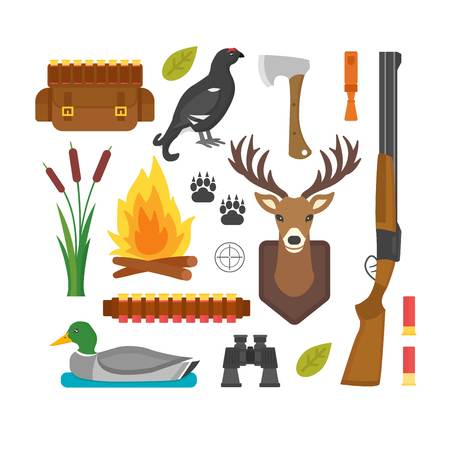Understanding Leave No Trace Principles
The British countryside, with its rolling hills, ancient woodlands, and wild moorlands, invites us to wander and wonder. At the heart of this invitation lies the ethos of Leave No Trace—a philosophy that transcends mere rules and becomes a gentle call to responsibility. These principles offer more than just guidance; they shape the way we interact with nature, asking us to tread lightly and cherish what is not ours alone. By encouraging respect for the land, its creatures, and fellow explorers, Leave No Trace finds a special resonance here in Britain, where local communities often act as stewards of beloved landscapes. Whether you’re rambling through the Lake District or picnicking along the South Downs, these guidelines nurture a sense of belonging and shared guardianship. In essence, Leave No Trace connects us—city dwellers and country folk alike—to the timeless rhythms of the land, inviting us to care deeply for Britain’s natural beauty so that it may be enjoyed by all who follow in our footsteps.
2. An Introduction to the Countryside Code
Amidst Britain’s rolling meadows, ancient hedgerows, and wild uplands, the Countryside Code stands as a quiet yet steadfast guide. Born in the mid-20th century and evolving through decades of changing landscapes and societal needs, the Code embodies more than just rules—it reflects a deep-rooted respect for nature, rural communities, and the tapestry of heritage woven across England, Wales, and Northern Ireland.
The spirit of the Countryside Code is gentle but firm: it invites everyone—ramblers, cyclists, dog walkers, picnickers—to enjoy the outdoors while safeguarding its beauty for generations to come. This cherished framework harmonises individual freedom with communal responsibility, echoing that timeless British ethos of fairness and consideration. The Code is not law per se, but many of its principles are underpinned by national legislation such as the Rights of Way Act and laws concerning wildlife protection and land access.
To understand how the Countryside Code shapes respectful enjoyment of Britain’s natural spaces, it helps to look at its key components:
Principle |
Description |
|---|---|
Respect Other People |
Be considerate to those living, working or enjoying the countryside; leave gates and property as you find them. |
Protect the Natural Environment |
Take litter home, avoid fires, keep dogs under control, and leave no trace of your visit. |
Enjoy the Outdoors Responsibly |
Plan ahead, follow marked paths, and be mindful of your impact on delicate habitats. |
The origins of this code can be traced to a collective yearning—shaped after World War II—for shared green spaces where people could reconnect with nature without causing harm. Over time, it has become an essential part of British outdoor culture, blending statutory guidance with an unspoken etiquette passed down through generations. Whether you are traversing Dartmoor’s misty tors or pausing beside a Cotswold stone wall draped in wildflowers, following the Countryside Code ensures that these moments remain possible for all who seek solace or adventure in Britain’s enchanting landscapes.

3. Key Laws Governing Outdoor Conduct
Setting out on a walk across the rolling moors or meandering through dappled woodlands in Britain is to partake in a cherished national tradition—one that is underpinned by a tapestry of laws and customs designed to protect both the landscape and those who wander it. Understanding these key legal requirements ensures your adventure is not only soulful but also respectful and lawful.
Public Footpaths: Your Right to Roam
The countryside is threaded with an ancient network of public footpaths, bridleways, and byways, enshrined in law by the Countryside and Rights of Way Act 2000 (CRoW). These rights of way allow walkers—and sometimes cyclists and horse riders—to cross private land without trespassing, provided they stick to designated paths. Gates should be closed behind you, stiles crossed with care, and crops left undisturbed. Remember, venturing off-path on private land without permission remains trespassing—a gentle reminder to tread thoughtfully.
Access Land and Open Spaces
In certain areas—often signposted as “Access Land”—the public enjoys broader freedoms to roam. These wild expanses invite you to explore heaths, downs, and commons beyond marked tracks. However, even here, restrictions apply: dogs may need to be kept on leads during nesting season; camping, cycling, or lighting fires are generally prohibited unless explicitly allowed. Always check local signs or council information before setting off.
Wild Camping: A Delicate Balance
The allure of sleeping beneath the stars is irresistible for many, yet wild camping rules in England and Wales are strict. Outside of Dartmoor National Park (where specific allowances exist), wild camping without the landowner’s consent is technically unlawful. In Scotland, the Land Reform (Scotland) Act 2003 permits responsible wild camping almost everywhere—provided you follow the Scottish Outdoor Access Code. Wherever you lay your head, choose discreet sites, arrive late, leave early, and always take everything away with you.
Respecting Private Property and Wildlife
A vital part of British countryside etiquette is respecting the privacy and livelihoods of those who live and work on the land. Leave gates as you find them; avoid disturbing livestock or wildlife; resist picking flowers or collecting stones. Dogs should be kept under close control, especially around farm animals or during bird nesting season.
By honouring these laws and customs—woven together like hedgerows bordering a rural lane—you become part of a centuries-old story of harmony between people and place. Each step becomes not just a journey through landscape but an act of stewardship for all who will follow.
4. Quintessential British Etiquette in Nature
Wandering through the patchwork fields and meandering footpaths of the British countryside, one soon discovers that etiquette is as much a part of the landscape as ancient oaks and bracken. This unspoken code—woven into every muddy lane and sun-dappled meadow—shapes the subtle choreography of rural encounters.
Greetings on Muddy Lanes
In Britain, it’s customary to greet fellow walkers with a nod, a smile, or a gentle “Good morning” when passing on narrow country tracks. These brief exchanges foster a sense of camaraderie, acknowledging each other’s shared reverence for the land. Even on the quietest paths, this tradition endures: sometimes a simple tip of the cap says more than words ever could.
Gate Protocol: Mind the Hinge
The countryside is peppered with gates—wooden, metal, old, or new—all serving to keep livestock safe. Proper gate etiquette is a badge of respect for both farmer and animal. The golden rule: always leave gates as you find them. If it was open, leave it open; if closed, close it behind you. Here’s a handy guide:
| Situation | Your Action |
|---|---|
| Approaching a closed gate | Open gently and close securely after passing |
| Finding an open gate | Leave it open unless clearly marked otherwise |
| Passing with a group | The last person ensures the gate is left as found |
The Art of a ‘Proper Picnic’
A picnic in the British countryside isn’t just about sandwiches and thermos tea—it’s about savouring place and time. Choose your spot thoughtfully: never trample wildflowers or disturb grazing sheep. Lay out your blanket where you’ll cause no harm, tidying every crumb and scrap before you depart. The ritual is simple but profound: take only memories, leave only flattened grass.
The Quiet Joys of Sharing Space
Outdoors in Britain, people cherish both solitude and subtle connection. Share stiles and benches with strangers; offer a polite “after you” or “thank you.” When encountering livestock—cows chewing cud or lambs at play—move calmly and quietly, respecting their home as you would your own neighbor’s garden. In these small acts lies a gentle dance between visitor and land—a testament to centuries-old customs that make every ramble feel like coming home.
5. Protecting Wildlife and Natural Beauty
In the gentle hush of Britain’s countryside, a quiet responsibility stirs—one that calls us to safeguard the wild heart of these ancient lands. The principles of Leave No Trace and the Countryside Code are more than rules; they are an invitation to tread softly among hedgerows alive with nesting birds and through bluebell woods that have bloomed for centuries. Each step we take echoes a legacy of stewardship, reminding us that our presence should nurture rather than disturb. It is both law and unwritten etiquette in the UK to respect wildlife habitats: keep to footpaths during nesting seasons, leave wildflowers unpicked, and observe creatures from a respectful distance. The beauty of the British countryside is not only in its sweeping vistas but also in its small wonders—the foxglove standing proud in dappled light, the deer moving quietly at dawn. By embracing these responsibilities, we ensure that future generations may wander under the same whispering trees and marvel at the same delicate balance of life. Let us celebrate this shared guardianship, cherishing every mossy stone and songbird as part of our collective heritage.
6. Practical Tips for a Leave No Trace Experience
Embracing the British countryside is as much about tradition as it is about respect. Here are some practical, heart-led ways to ensure your rambles and picnics weave seamlessly into the landscape, leaving only footprints and fond memories behind.
Packing with Purpose
Begin by curating your hamper thoughtfully: opt for reusable containers, beeswax wraps, and sturdy flasks instead of single-use plastics. Choose local treats—cheddar, oatcakes, or Victoria sponge—to celebrate regional flavours while supporting village shops. Tuck a cloth napkin and a small rubbish bag into your rucksack; these humble touches signal care for both the land and its customs.
Waste Not, Want Not
Every sweet wrapper or sandwich crust must be accounted for. Collect all litter discreetly, even if it isn’t yours—a quiet nod to the Countryside Code’s spirit. If bins aren’t available, carry waste home for proper disposal. And remember: biodegradable items like orange peels or tea bags may still disrupt delicate ecosystems, so take them with you too.
Tread Lightly and Quietly
Stick to marked footpaths to avoid trampling wildflowers or disturbing nesting birds. If you encounter livestock, pass calmly and close gates behind you—a gesture as old as hedgerows themselves. Keep dogs under close control; their curiosity can unsettle sheep or ground-nesting birds in springtime.
Honouring Heritage Through Etiquette
The timeworn traditions of the British countryside are kept alive through simple courtesies: greet fellow walkers with a nod or gentle “good morning,” yield to those climbing uphill, and pause to admire dry stone walls without clambering over them. Each action knits you into a living tapestry of respect and rural grace.
A Lasting Impression
By gathering up your belongings—and perhaps an extra bit of litter—you leave the hills and hedges as inviting for the next wanderer as they were for you. In this way, we honour not just the letter of British law, but its deeper etiquette: to cherish our green and pleasant land for generations yet to come.


